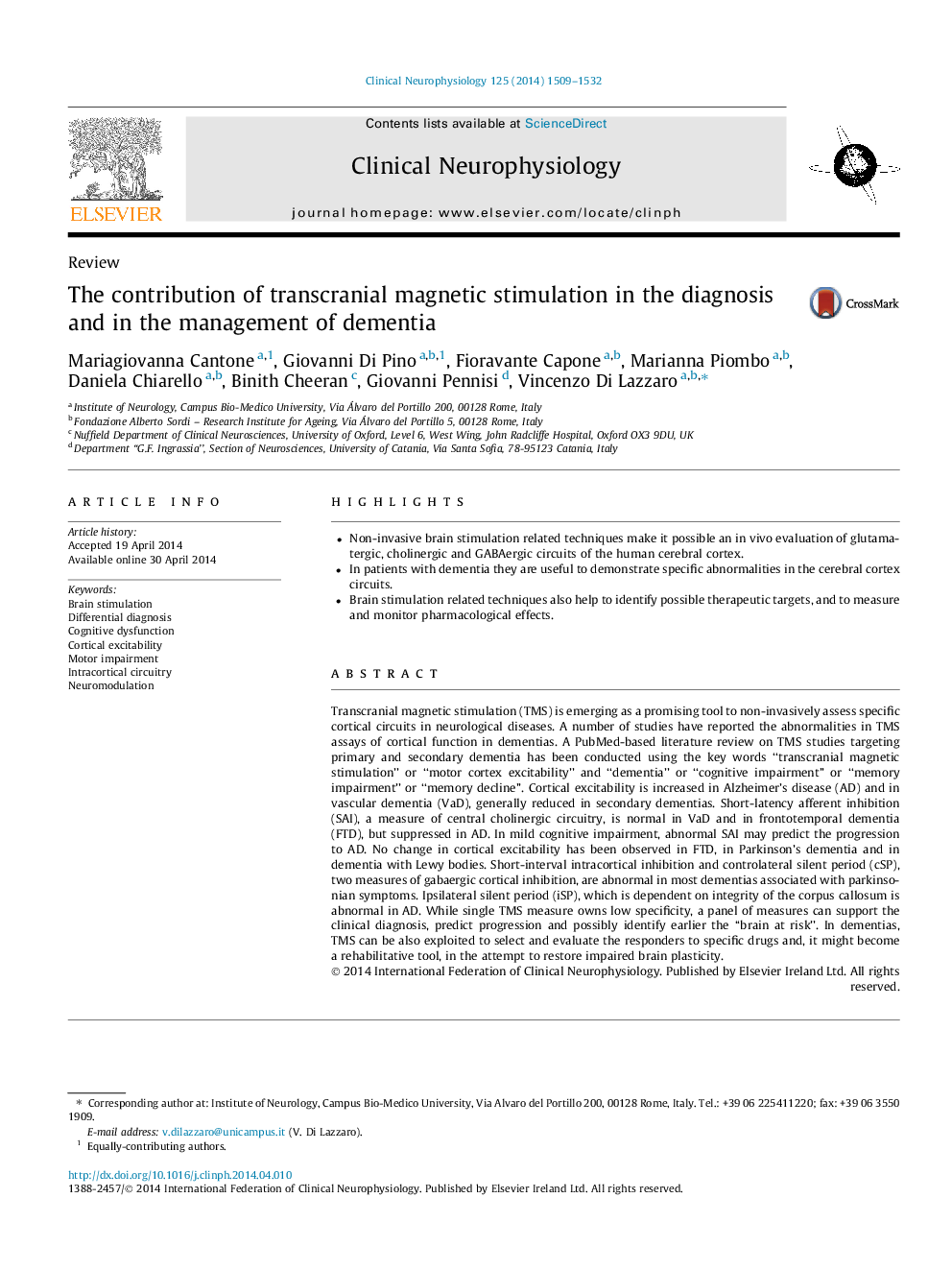| Article ID | Journal | Published Year | Pages | File Type |
|---|---|---|---|---|
| 3043479 | Clinical Neurophysiology | 2014 | 24 Pages |
•Non-invasive brain stimulation related techniques make it possible an in vivo evaluation of glutamatergic, cholinergic and GABAergic circuits of the human cerebral cortex.•In patients with dementia they are useful to demonstrate specific abnormalities in the cerebral cortex circuits.•Brain stimulation related techniques also help to identify possible therapeutic targets, and to measure and monitor pharmacological effects.
Transcranial magnetic stimulation (TMS) is emerging as a promising tool to non-invasively assess specific cortical circuits in neurological diseases. A number of studies have reported the abnormalities in TMS assays of cortical function in dementias. A PubMed-based literature review on TMS studies targeting primary and secondary dementia has been conducted using the key words “transcranial magnetic stimulation” or “motor cortex excitability” and “dementia” or “cognitive impairment” or “memory impairment” or “memory decline”. Cortical excitability is increased in Alzheimer’s disease (AD) and in vascular dementia (VaD), generally reduced in secondary dementias. Short-latency afferent inhibition (SAI), a measure of central cholinergic circuitry, is normal in VaD and in frontotemporal dementia (FTD), but suppressed in AD. In mild cognitive impairment, abnormal SAI may predict the progression to AD. No change in cortical excitability has been observed in FTD, in Parkinson’s dementia and in dementia with Lewy bodies. Short-interval intracortical inhibition and controlateral silent period (cSP), two measures of gabaergic cortical inhibition, are abnormal in most dementias associated with parkinsonian symptoms. Ipsilateral silent period (iSP), which is dependent on integrity of the corpus callosum is abnormal in AD. While single TMS measure owns low specificity, a panel of measures can support the clinical diagnosis, predict progression and possibly identify earlier the “brain at risk”. In dementias, TMS can be also exploited to select and evaluate the responders to specific drugs and, it might become a rehabilitative tool, in the attempt to restore impaired brain plasticity.
